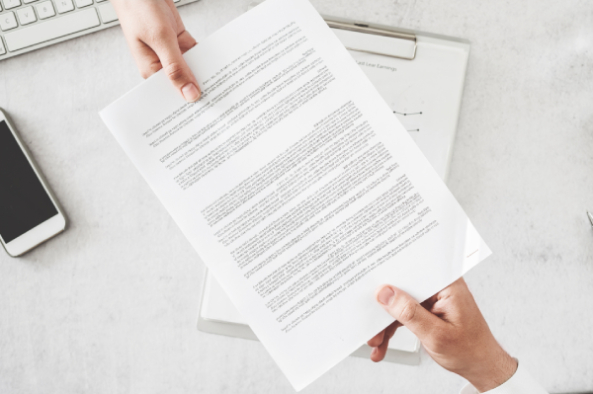In today's digital landscape, ensuring the security of sensitive data is of paramount importance for businesses.
One crucial step in demonstrating your commitment to information security is achieving and maintaining SOC 2 compliance.
This blog post will guide you through the key aspects of the auditing standard, helping you to better understand the necessary preparations and ongoing maintenance required to build a robust security posture.
We will explore the essential documents that describe your business, clients, and the industries you serve, as well as the policies, procedures, and security measures your company should have in place to meet SOC 2 requirements.
Furthermore, we'll delve into best practices for continuous improvement and maintenance, ensuring that your security measures remain effective and up-to-date.
By following this comprehensive guide, you'll be well-equipped to develop a strong security foundation that not only meets compliance standards but also fosters trust and confidence among your clients and partners.
Let's dive into this SOC 2 compliance checklist and begin the journey toward enhanced information security for your business.
To ensure your company is on track with its compliance, it's crucial to have a set of key documents prepared that describe your overall business, clients, and industries served.

This not only helps you and your auditors better understand your company's operations and security compliance but also demonstrates your commitment to protecting sensitive information.
To get started, make sure you have the following documents and records in place:
A document that provides a high-level summary of your organization, its mission, and its history.
This should include key milestones and achievements, as well as any significant challenges faced along the way.
A comprehensive list of all products/services offered by your company, including descriptions, pricing, and any unique features.
This will help you better understand the scope of your company's operations and the data that needs protecting.
A detailed list of your clients, including contact information, industries served, and any specific requirements they may have.
This is especially important for companies serving clients in regulated industries, such as healthcare, finance, or government.
A summary of any relevant government regulations that may apply to your company based on the industries you serve or the services you provide.
This may include data privacy laws, industry-specific regulations, or general corporate compliance requirements.
Ensure you have records of any meetings related to risk management or security, including discussions, decisions, and action items.
These records demonstrate your company's commitment to addressing cybersecurity risks and staying compliant with AICPA (American Institute of Certified Public Accountants)
Maintain records of any insurance policies that protect your company from potential risks, including cybersecurity insurance coverage.
This shows that your organization is prepared for potential security incidents and has taken steps to minimize the impact on clients and stakeholders.
A list of your key vendors and subcontractors, along with their contact information and the services they provide.
This is important because your company's SOC 2 certification may depend on the security practices of these third parties.
By having these essential documents and records prepared, you'll be well-equipped to provide the general context that your auditors need to understand your business.
This will help you navigate the compliance process much more smoothly.
A crucial part of meeting security requirements involves assembling and reviewing vital Human Resources (HR) documents.
These documents help establish your company's mature practices and provide evidence of compliance with industry standards.

In this section, we'll discuss the essential HR documents that your business should have prepared, as well as their significance.
These policies outline your company's expectations, workplace guidelines, and legal obligations.
Clear HR policies help maintain a positive work environment while avoiding potential legal issues down the line.
Employee manuals serve as a comprehensive guide for your staff, providing essential details about your company's culture, values, compliance, and processes.
Establishing a strong ethics policy demonstrates your company's commitment to responsible and ethical business practices.
This document sets the foundation for your employees' conduct, ensuring that all staff members adhere to the same set of ethical guidelines.
Documenting clear job descriptions allows employees to understand their roles and responsibilities within the organization.
It also helps in setting performance expectations and streamlines the hiring process by ensuring candidates are aware of the job requirements.
Employee Evaluations: Regular employee evaluations help maintain a high-performing work environment and provide valuable insight into staff development needs. Including these evaluations in your checklist ensures that your company adheres to performance management industry standards.
Disciplinary Processes: Clearly documenting and following disciplinary processes demonstrates your company's commitment to maintaining a fair work environment, and as it pertains to security and privacy. It also helps you manage employee disputes or workplace misconduct effectively and in compliance with industry best practices.
Organizational Charts: A well-structured organizational chart displays your company's hierarchy, reporting lines, and department structures. This document helps employees, clients, and regulators understand your organization's structure and decision-making processes.
Background Screening Standards: A well-defined background screening process helps ensure that you're hiring employees who meet the necessary qualifications and have a clean professional record. This supports your company's commitment to maintaining a secure and compliant work environment.
New Hire and Termination Procedures: Documenting procedures for new hires and terminations ensures that your company follows a standardized process that complies with industry best practices. This not only helps streamline onboarding and exit processes but also minimizes potential legal risks associated with hiring and termination decisions.
In summary, assembling and reviewing these essential HR documents helps demonstrate your company's commitment to maintaining a secure, compliant, and responsible work environment.
It also provides evidence that your business follows industry standards and best practices, instilling confidence in your clients and stakeholders.
So, make sure to keep these documents updated and readily available as part of your ongoing compliance efforts.
In this section, we'll discuss several key documents that are crucial for maintaining a secure and organized IT infrastructure, software development process, and data center management.

To ensure a secure and organized IT infrastructure, you should have:
1. A list of IT personnel, their roles, and responsibilities
2. A comprehensive inventory of servers, devices, and software used by the company
3. Information on external contractors and vendors with access to core systems
4. Network diagrams to provide a clear visualization of the IT infrastructure
5. Virtual machine details to track infrastructure changes
6. A ticketing system in place to manage user support requests
If your company develops software, it's essential to have:
1. A documented software development lifecycle (SDLC) that outlines the process from conception to deployment
2. Change management policies to ensure proper oversight of software modifications
3. Evidence of formal testing processes, such as unit testing, integration testing, and system testing
4. Strict access controls for production systems, ensuring only authorized personnel can access them
5. An inventory of externally facing Application Programming Interfaces (APIs) and their security measures in place to protect sensitive data
For companies that use data centers, the following documentation is crucial:
1. A description of data center usage, including the types of data stored and processed
2. Recent invoices to show ongoing data center expenses and management
3. Audit reports confirming compliance with industry standards and security practices
These documents will not only help you maintain a secure and organized IT infrastructure but will also make the compliance process smoother and more efficient.
Remember to review and update your documentation regularly as your business and technology landscape evolves.
Navigating the world of information security can be daunting for any company.
You will need to prepare several critical information security documents to comply with AICPA's guidelines.

First and foremost, it's vital to have your security policies and procedures in place. These policies should be regularly reviewed, either on an annual basis or during times of significant changes within your organization. These policies should cover:
- Risk management
- Incident response
- Acceptable use of company equipment
Additionally, it's crucial to provide training for employees on how to handle sensitive information securely.
Implementing technical measures such as encryption, email security, and antivirus protection can further ensure data security.
To fortify your company's security, be sure to focus on the following areas:
- Authentication and password policies
- Network security
- Cloud Security
- Regular data backups
- Vendor management
- Remote work policies
To demonstrate your company's commitment to security and compliance, be prepared to provide auditors with the following documents:
- Disaster recovery plans
- Risk assessments
- Staff training records
These records help show that your company is proactive in addressing potential security concerns and that you have a plan in place in case of emergencies.
Auditors may also require evidence of specific security measures in place, such as:
- Antivirus coverage
- Vulnerability scans
- Mobile device management
Additionally, provide proof of:
- Strong password policies and account security reviews
- Recent security incidents and the steps are taken to address them
- Disaster recovery tests
- Cloud application management
Finally, be prepared to demonstrate proper handling and maintenance of:
- Encryption keys
- Security monitoring tools
- Vendor risk assessments
By ensuring your company has these essential documents and security measures in place, you'll be well-prepared for your audit.
Remember that maintaining strong security practices is not only vital for compliance but also for the protection of your business and its clients.
By making security a priority, you'll not only demonstrate your company's commitment to data protection but also foster trust and confidence among your clients and partners.
Achieving SOC 2 compliance is only the beginning of your company's information security journey.
Continuous improvement and ongoing maintenance are essential to ensure your security measures stay current and effective.
In this section, we will discuss the best practices for maintaining and improving your company's security posture.
It's essential to revisit your security policies at least annually or whenever significant changes occur within your organization.
Regular reviews ensure that your policies remain relevant and updated to accommodate new technologies, industry standards, and client requirements.
Continuous employee training and awareness programs are vital for keeping your team informed of the latest security threats and best practices.
Regular training sessions can ensure that your employees know how to handle sensitive information securely and recognize potential security risks.
Perform routine security assessments to identify any vulnerabilities in your system and take corrective measures to address them.
This process can involve:
- Internal and external vulnerability scans
- Penetration testing
- Social engineering tests
By identifying and addressing potential weaknesses, you'll help prevent security incidents and demonstrate your commitment to maintaining a robust security posture.
Develop and maintain a comprehensive incident management and response plan.
This plan should outline the steps your organization will take in case of a security breach or other incidents. Key elements of an effective incident response plan include:
- Clear roles and responsibilities for team members during an incident
- A communication plan for notifying clients, partners, and regulators
- Procedures for containing and mitigating the incident
- A plan for post-incident analysis and improvement
Regularly review and update your incident response plan to ensure it remains effective and reflects any changes within your organization.
As part of your ongoing vendor management, it's crucial to monitor and review your third-party vendors to ensure they maintain appropriate security measures.
Conduct periodic assessments of each vendor's security posture, address any concerns that arise, and update your vendor risk assessments accordingly.
Information security is a rapidly evolving field, and staying informed about industry trends and best practices is key to maintaining effective security measures.
Participate in industry conferences, follow relevant blogs and newsletters, and engage with fellow professionals to stay up-to-date on the latest threats and advancements in cybersecurity.
Finally, it's essential to measure and track your progress in maintaining and improving your company's security posture.
Establish key performance indicators (KPIs) and set goals to measure your company's progress in meeting security objectives.
Some useful KPIs to track may include:
- Number of security incidents detected and resolved
- Time taken to identify and mitigate vulnerabilities
- Percentage of employees completing security training
- Results of internal and external security audits
By monitoring these metrics, you can identify areas for improvement and ensure that your company is continuously working towards enhanced security.
An essential component of achieving and maintaining SOC 2 compliance is fostering a strong culture of security within your organization.
This goes beyond merely implementing security policies and procedures; it involves creating an environment where every team member understands the importance of information security and actively contributes to maintaining a secure infrastructure.

In this section, we will discuss several strategies to help cultivate a security-first mindset among your employees and stakeholders.
The tone at the top is critical in setting the stage for a strong security culture.
Leadership should actively communicate the importance of information security and demonstrate their commitment to implementing effective security measures.
This can include allocating resources for security initiatives, participating in security training, and ensuring security objectives are incorporated into overall business goals.
Develop and implement comprehensive security awareness and training programs that are tailored to your organization and its specific needs.
These programs should be designed to educate employees about potential security threats, best practices for handling sensitive data, and their role in maintaining a secure environment.
Regularly update and reinforce these programs to ensure they remain effective and relevant.
Create an environment where employees feel comfortable reporting any security concerns, incidents, or potential vulnerabilities.
Establish clear channels for reporting, such as a dedicated email address, an anonymous reporting system, or an internal messaging platform.
Encourage employees to report issues without fear of retribution, and acknowledge their contributions to strengthening your organization's security.
Incorporate security best practices into daily workflows to make it easier for employees to adopt secure habits.
This can include automating security processes where possible, embedding security checkpoints within project management tools, and integrating security considerations into development and operational processes.
Conduct periodic security drills and exercises to test your team's preparedness for dealing with various security scenarios.
This can involve simulated phishing attacks, social engineering tests, and tabletop exercises for incident response.
These drills can help identify areas for improvement, reinforce security awareness, and build confidence in your team's ability to handle real-life security incidents.
Identify and recognize individuals or teams who consistently demonstrate a strong commitment to security.
By acknowledging their efforts and rewarding them, you can encourage other employees to follow suit and actively contribute to building a secure organization.
Maintaining SOC 2 compliance requires constant vigilance and commitment to ongoing improvement.
By regularly reviewing and updating your security policies, providing employee training, conducting periodic assessments, managing incident response, monitoring third-party vendors, staying informed of industry trends, and tracking your progress, your company can ensure that its security measures remain robust and up-to-date.
Remember, strong security practices not only help you achieve and maintain compliance but also protect your business, clients, and partners.
By prioritizing security and continuously striving for improvement, you demonstrate your company's commitment to data protection, fostering trust and confidence among all stakeholders.
An Adelia Risk Virtual CISO can help you prepare the processes, tools, and documents needed to pass a SOC 2 audit. Learn more today!
